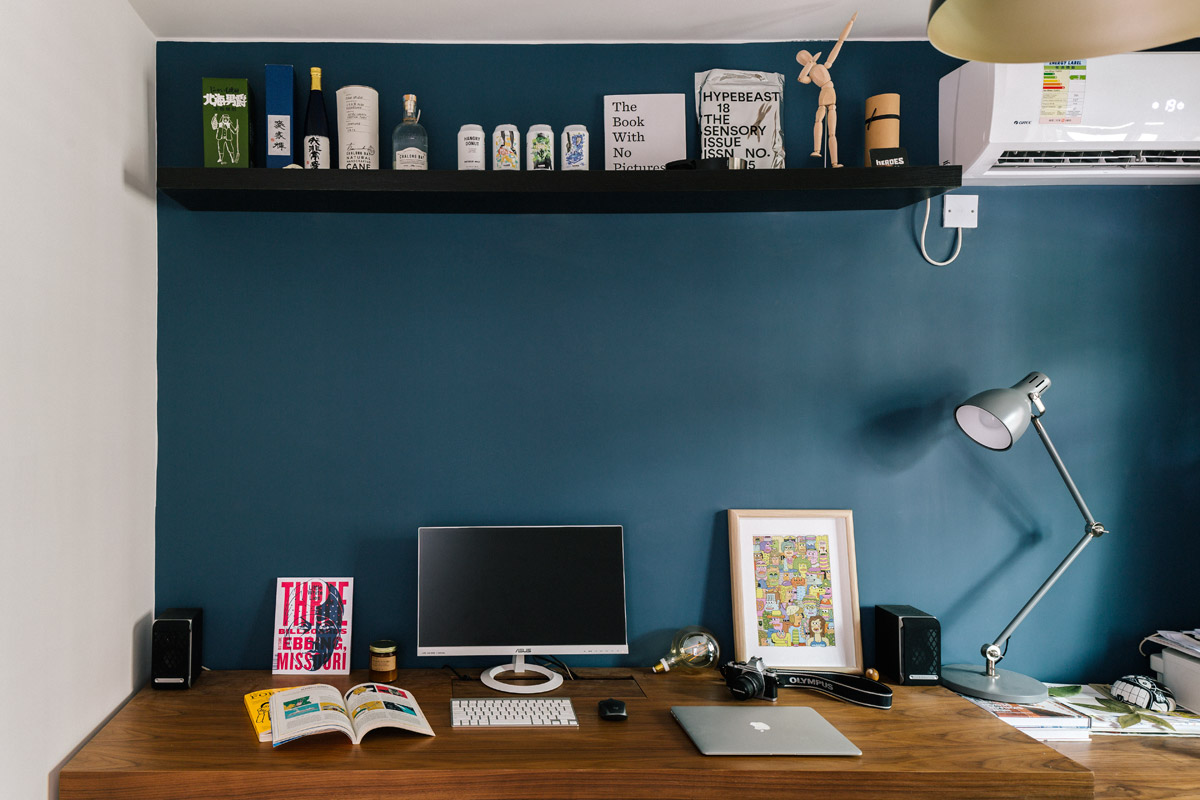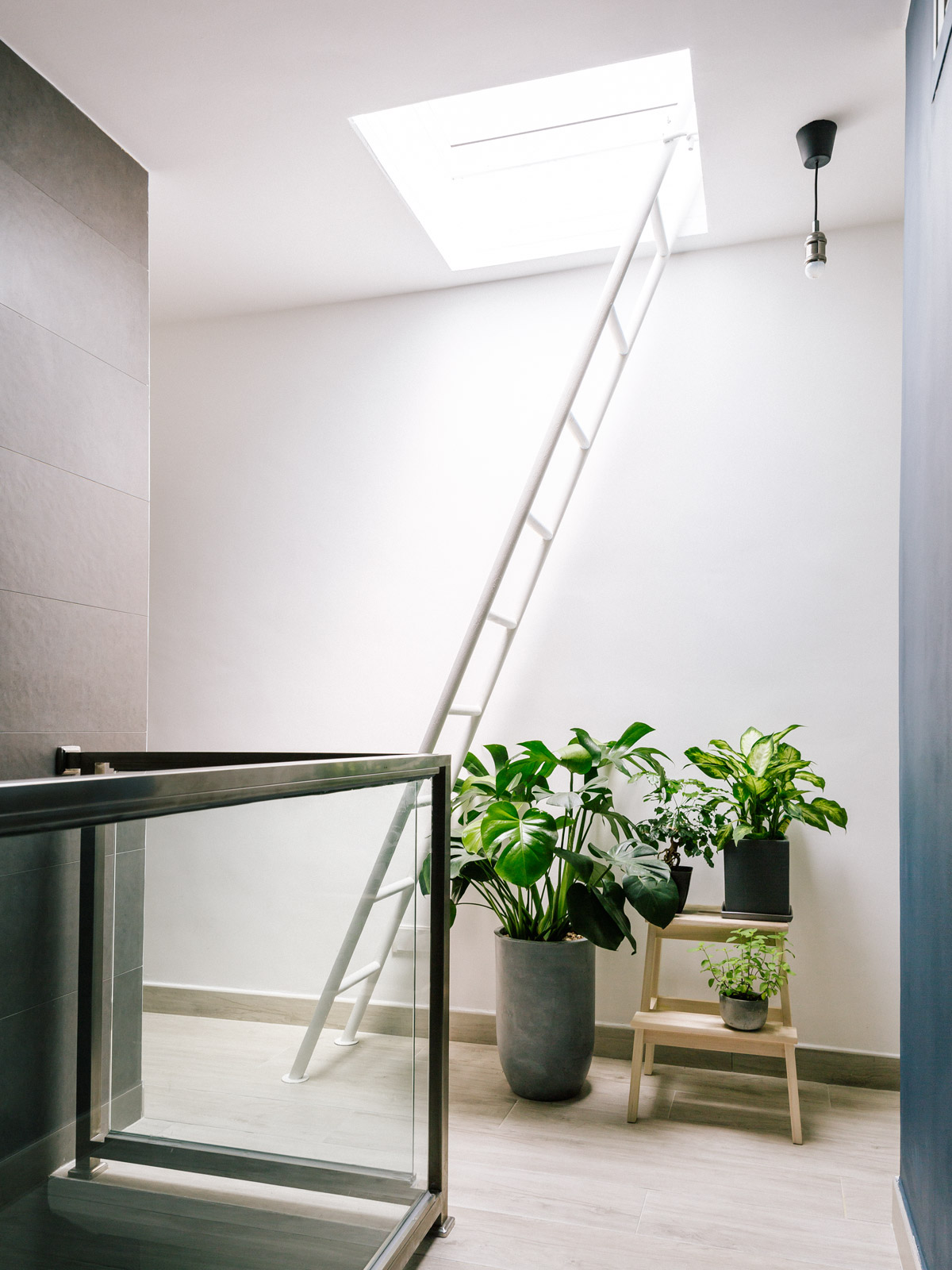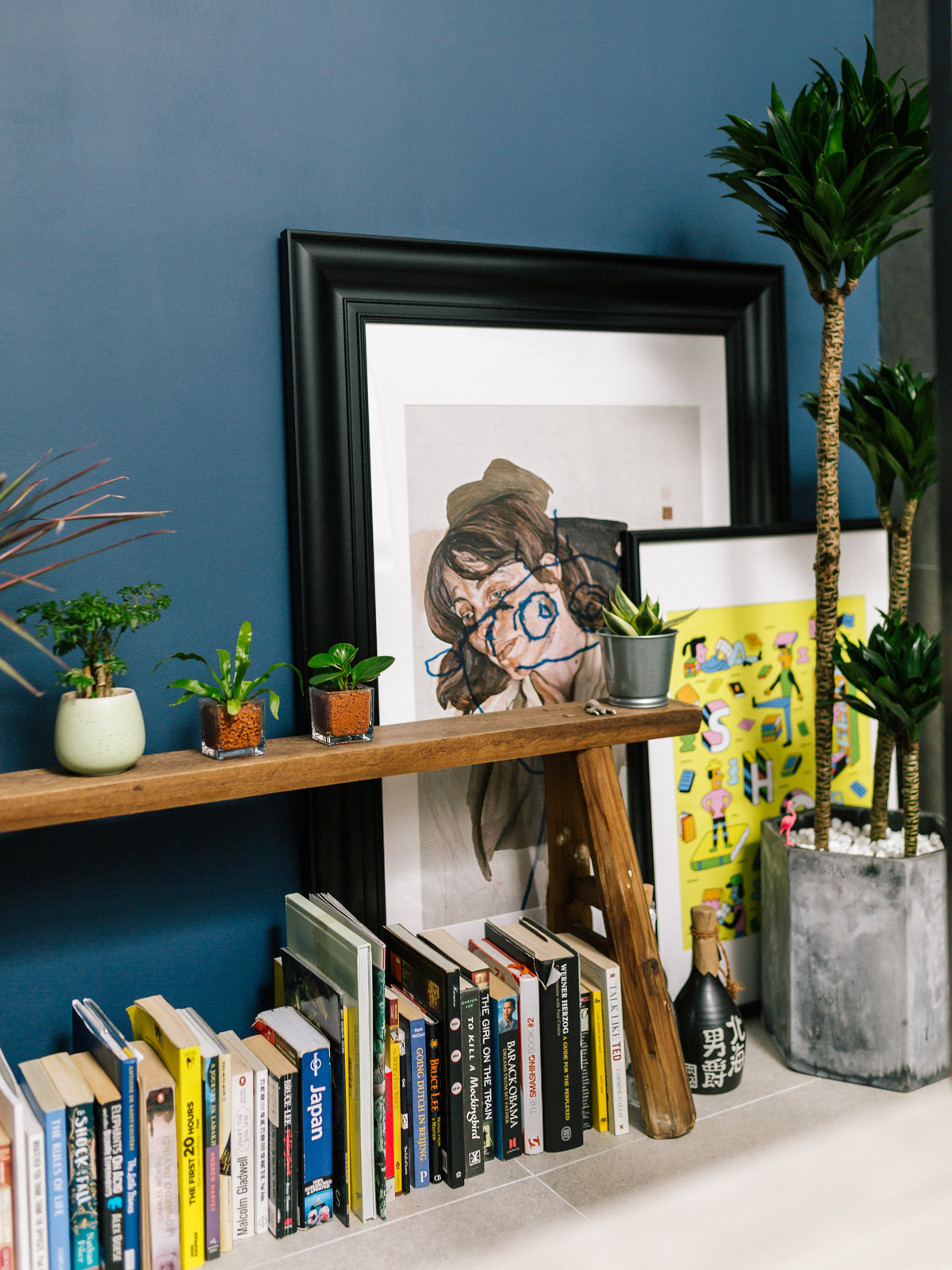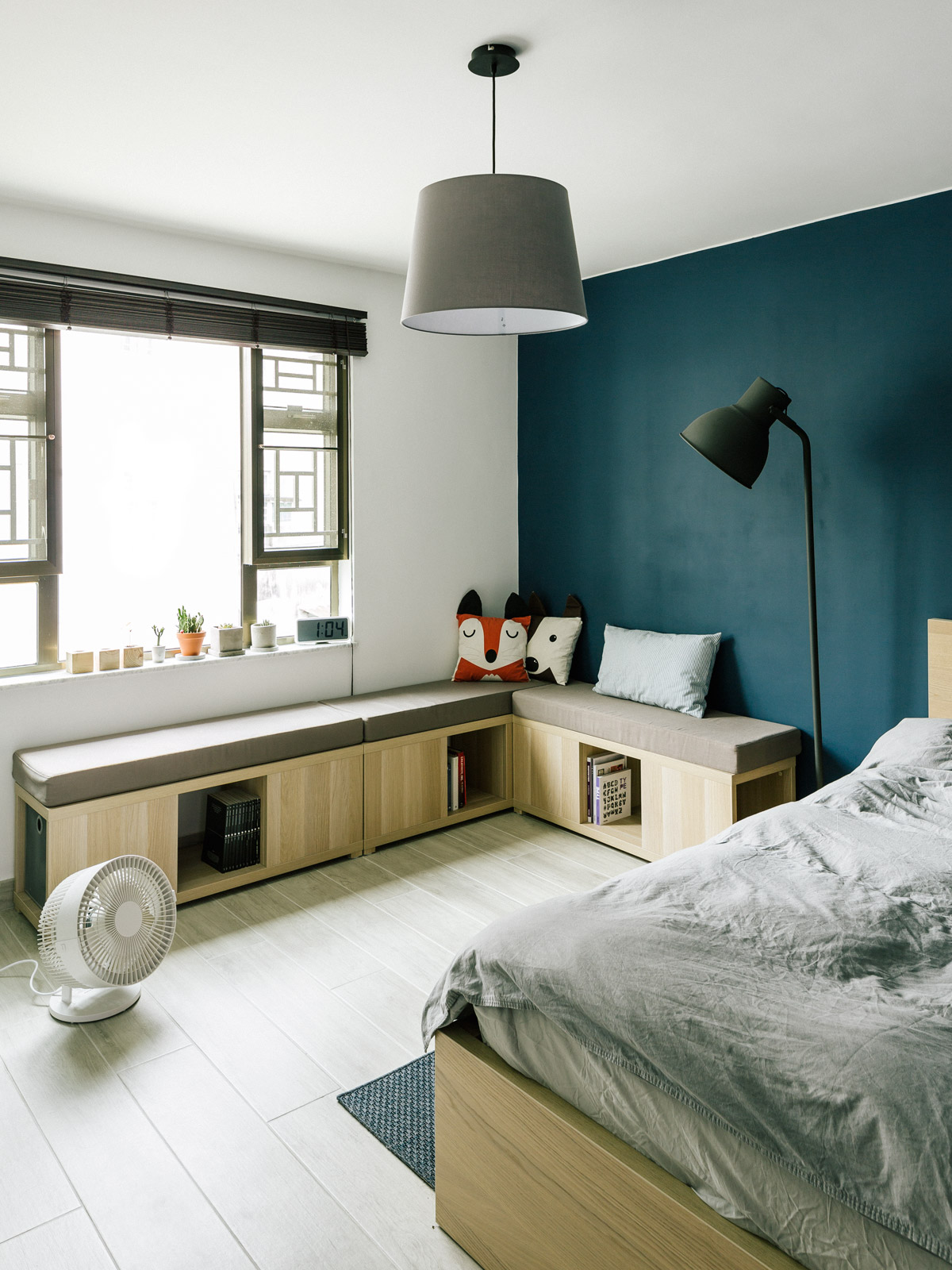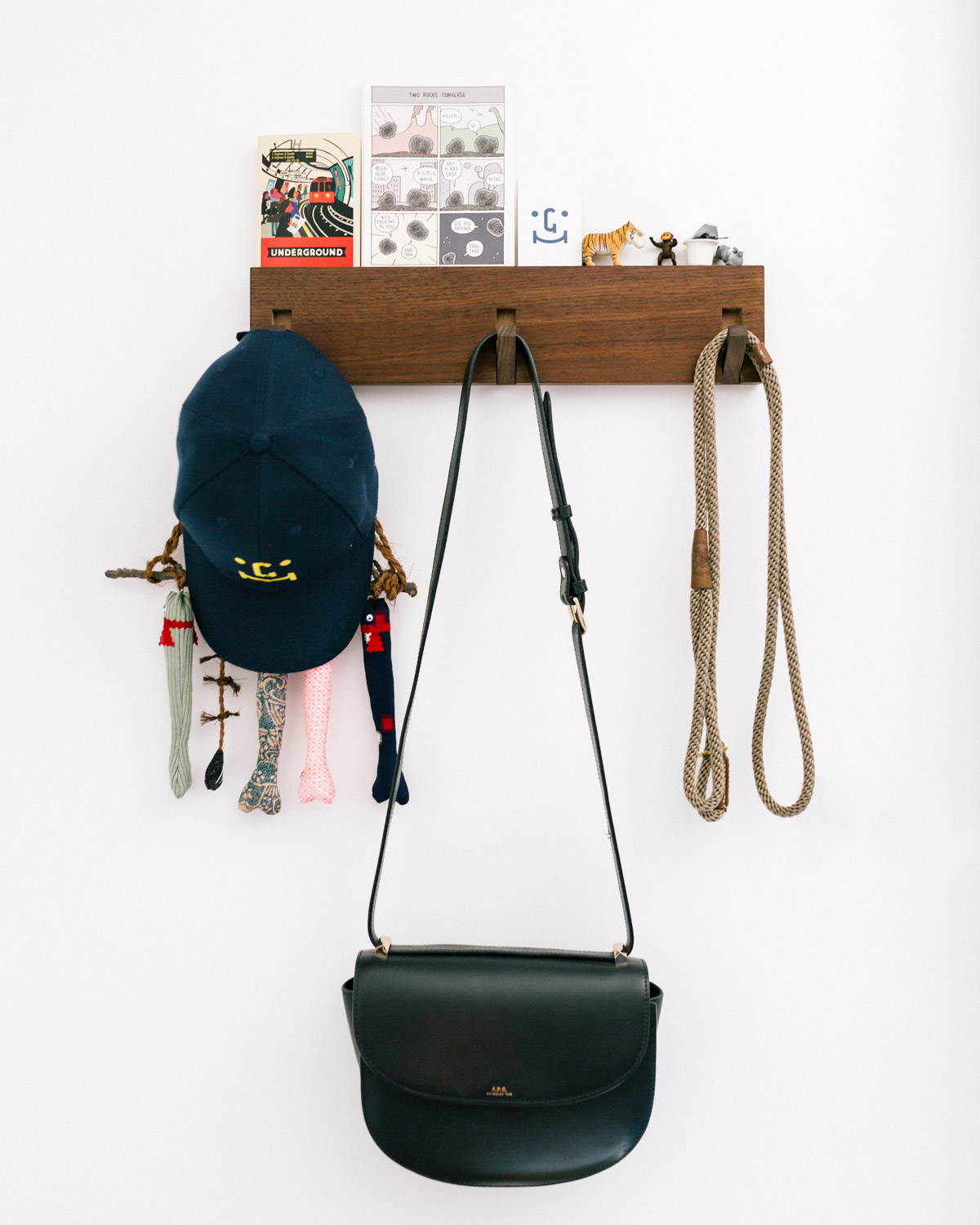Approaching Kafai Mak’s Tai Po village house on a still and balmy spring day, he repeatedly and profusely apologises for its unfinished state.
After all, says the UK-born brand strategist and founder of Tomorrow Co., I wasn’t thinking of being featured in any magazine!” Indeed the home, as we would come to see, is a curious, incongruous amalgamation of old and new, East and West, rural and urban – a true work in progress.
Originally a century-old ancestral brick longhouse built in the traditional style of the Punti indigenous people and separated into three family units, the middle of the structure had succumbed to the elements due to neglect over the years. Seeing the bones of the house as an opportunity, Kafai took this distinctive family property into his own hands, embarking on a project of repair and redecoration to transform it into a home for himself and his girlfriend, Pat.
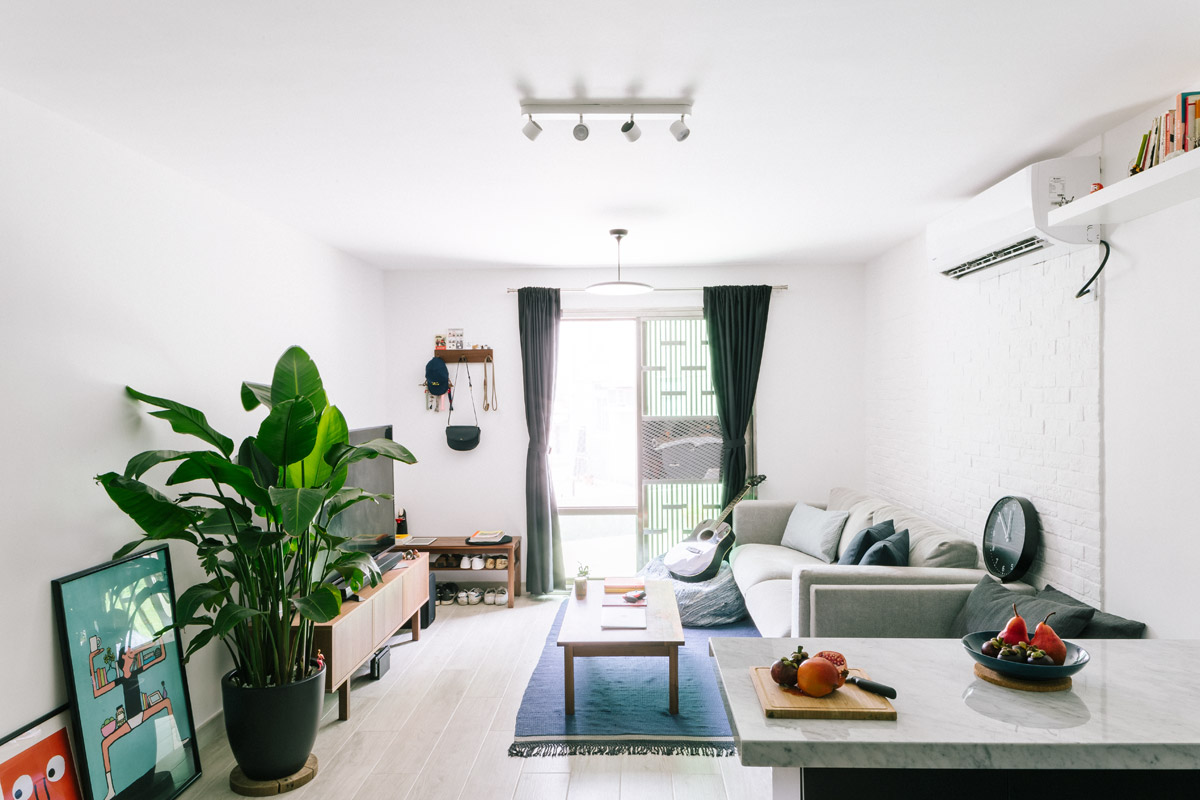
Although Kafai had a strong aesthetic vision in his mind for the 1,000-sqft, two-floor home from the start, the project inevitably involved many compromises, including relinquishing his pick of contractors to his family, who insisted on using the village handymen. They’re very good at standardising things, but a lot of their workmanship isn’t polished to the standard of hotels, for example,” he confesses. They had very limited resources, because they include a lot of things – like tiles – in a package deal, so I would have to pay additional costs for anything extra, which I did.”
See more: This Sheung Wan apartment makes a strong case for do-it-yourself design
As a result, Kafai was forced to create a number of ingenious tweaks to bring the finished interior up to standard. For one, the house is slotted between the two remaining sections of the Punti longhouse, elongating the dimensions and making it difficult for natural light to penetrate the interior. To ameliorate this lack of natural light, Kafai reorganised the floor plan for a studio-like living room on the ground floor, as well as adding a skylight above the stairwell that allows access to the roof via a ladder.
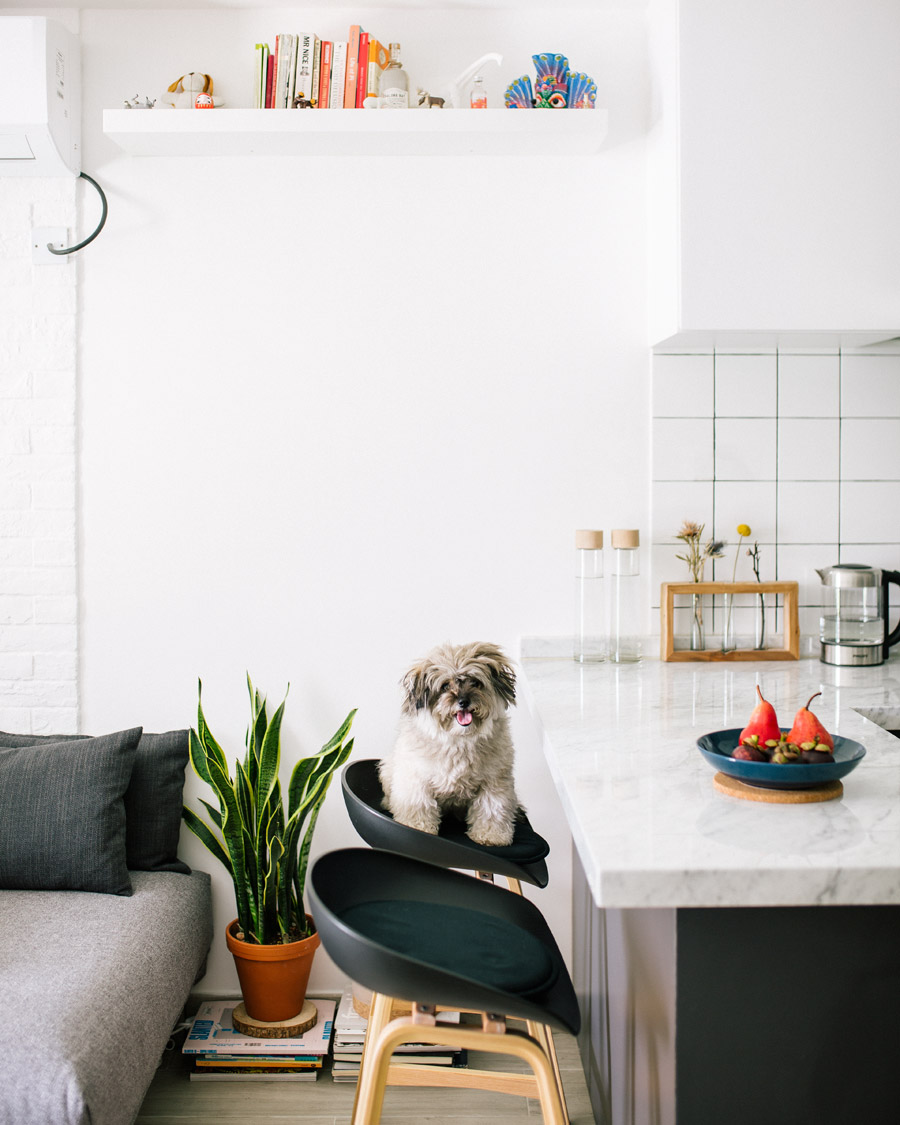
Elsewhere, the couple took things into their own hands when the contractors fell short on quality, in the process finding beauty and meaning in the imperfections. The stairwell wall, painted in Dulux’s Signature Blue, was a particular point of contention – Kafai recounts the sleepless nights he spent obsessively trying to get the dark paint perfectly consistent; there’s also the entire weekend he devoted to painting over the kitchen grouting in beige resin to reduce, in his own words, its resemblance to a toilet. There are marks on the wall but they’re our marks. When I see them I remember, ‘oh yeah, we f**ked it up last summer.’ You know every detail of the house when you build it yourself.”
A lot of the things are there out of necessity, so that also fuels the creativity.
And when things just wouldn’t work no matter how much they tried, the couple resorted to clever workarounds. When asked about a framed Lucien Freud print that had been artfully propped against the wall at the stairwell, Kafai explains with a chuckle, I messed up the wall, so I needed something to cover up [the mistakes] because we were having housewarmings – obviously, I couldn’t get the original [painting] so I printed it using a high-quality printer and then I drew a face over it. A lot of the things are there out of necessity, so that also fuels the creativity.”
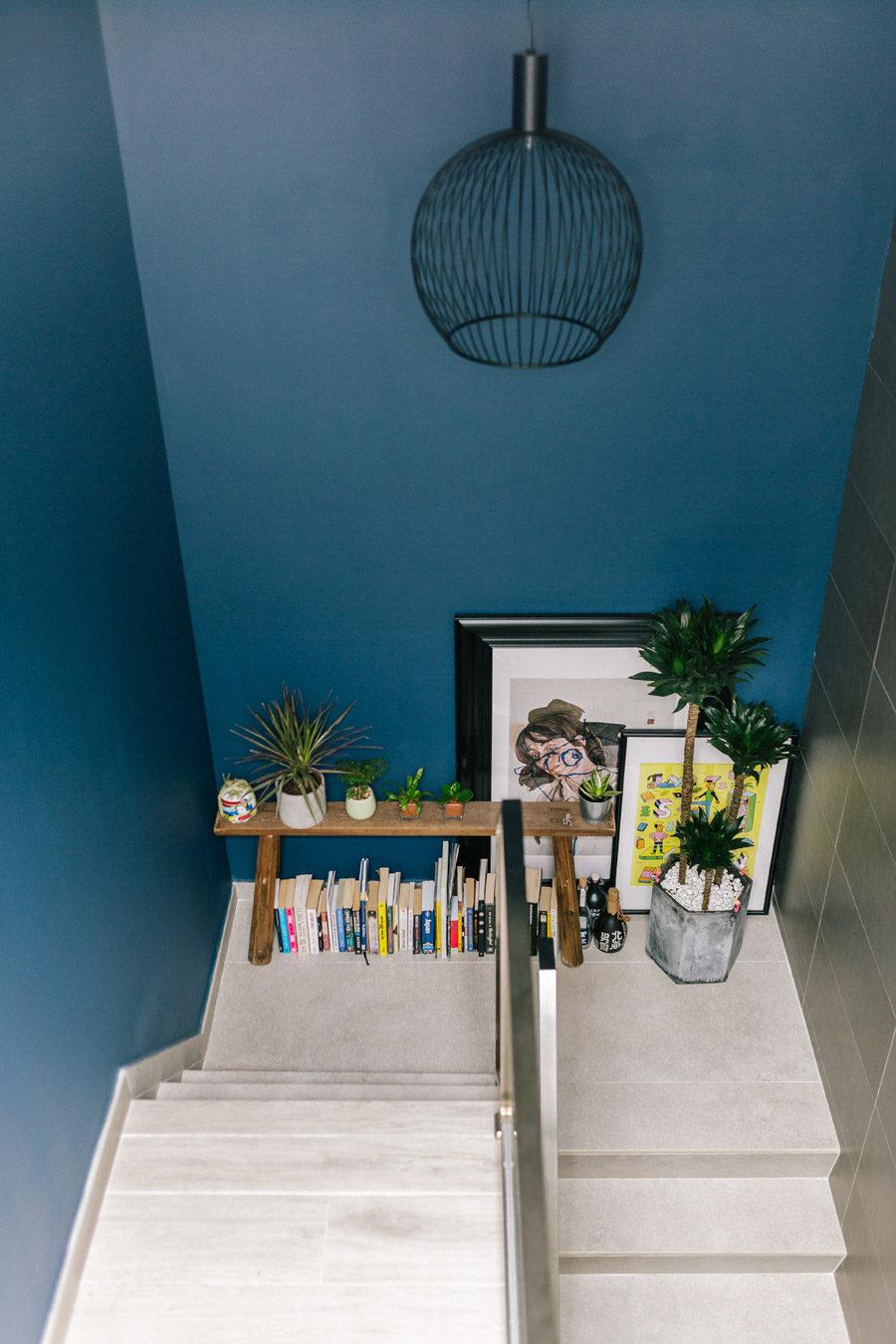
Although the couple have been living in the house since last October, the interior may never be truly finished, which is just the way they like it. In between the two visits Home Journal made to the home, Kafai had already moved the hulking Bosch double-door fridge to an adjacent wall from its original position upon the suggestion of a visiting aunt, so that it could act as a partition and better block the view of the bathroom from the front entrance. There’s the dressing room and home gym that have yet to be worked on, and talk of repurposing the rest of the original Punti structure into a workspace, or even a cafe.
See more: This Mid-Levels home is a high-tech wellness retreat for two sisters
For all his restlessness, Kafai seems satisfied with the fruits of his labour. You can design a space, but you don’t know how you’re going to use it until you start living there. I don’t think you’ll ever have a finished house that you want to leave alone,” he explains, before adding: Maybe we’ll repaint the colours one day because there are cracks.”
Kafai’s tips for keeping house plants
- Plants are great, but they attract a lot of flies. Get a Venus flytrap to keep them at bay.
- Use UV grow lights for the plants. They provide the full spectrum of wavelengths that’s the same as daylight, which helps the plants photosynthesise.
- A few large, broad-leafed plants, such as Swiss cheese plants, are easier to maintain than many small plants as they require less light and can be watered less frequently.
For more cleverly-designed cosy homes, don’t miss our Small Homes tag!
The post How a young couple gave their 1,000-sqft Tai Po village house a new lease on life appeared first on Home Journal.




